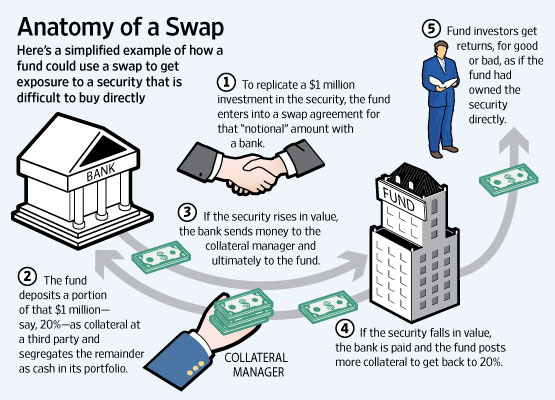
Swapping a Crate Engine into a Vintage Vehicle
Swapping a crate engine into a vintage vehicle is a popular way to improve its performance, reliability, and fuel economy. A crate engine is a brand new engine that is assembled and ready to be installed in a vehicle. Crate engines are available in a wide variety of sizes and configurations, so you can find one that is perfect for your needs.
Benefits of Swapping a Crate Engine
There are many benefits to swapping a crate engine into a vintage vehicle. Some of the most popular benefits include:
- Increased performance: A crate engine can significantly increase the performance of your vintage vehicle. This is because crate engines are typically more powerful and efficient than the original engines that came in vintage vehicles.
- Improved reliability: Crate engines are brand new, so they are much more reliable than older engines. This means that you will be less likely to experience breakdowns and repairs.
- Better fuel economy: Crate engines are typically more fuel efficient than older engines. This can save you money on gas in the long run.
- Increased value: Swapping a crate engine into your vintage vehicle can increase its value. This is because a crate engine makes your vehicle more desirable to collectors and enthusiasts.
Challenges of Swapping a Crate Engine
There are also some challenges to swapping a crate engine into a vintage vehicle. Some of the most common challenges include:
- Cost: Crate engines can be expensive. You will also need to factor in the cost of installation.
- Complexity: Swapping a crate engine is a complex project. It is important to have the necessary skills and experience to do it properly.
- Compatibility: It is important to choose a crate engine that is compatible with your vintage vehicle. You will need to consider the engine’s size, weight, and mounting points.
- Modifications: You may need to make some modifications to your vintage vehicle to accommodate the crate engine. This could include modifying the engine bay, exhaust system, and wiring harness.
Planning Your Crate Engine Swap
Before you start swapping a crate engine into your vintage vehicle, it is important to do your research and plan the project carefully. Here are some things to consider:
- Budget: How much are you willing to spend on the project?
- Goals: What do you want to achieve with the crate engine swap? Do you want to improve performance, reliability, or fuel economy?
- Vehicle: What is the make, model, and year of your vintage vehicle?
- Engine: What type of crate engine are you interested in?
- Skills: Do you have the necessary skills and experience to do the project yourself? If not, you may need to hire a professional mechanic.
Choosing a Crate Engine
Once you have considered the above factors, you can start shopping for a crate engine. There are many different crate engine manufacturers to choose from, so it is important to do your research and find one that is reputable and offers a good warranty.
When choosing a crate engine, you will need to consider the following factors:
- Size: The size of the engine will determine how much power it can produce.
- Configuration: The configuration of the engine will determine its performance characteristics. For example, a V8 engine will typically produce more power than a straight-six engine.
- Horsepower: The horsepower of the engine is a measure of its power output.
- Torque: The torque of the engine is a measure of its twisting force.
- Fuel economy: The fuel economy of the engine will determine how much gas it consumes.
Preparing Your Vintage Vehicle
Before you can install the crate engine, you will need to prepare your vintage vehicle. This includes:
- Removing the old engine: The first step is to remove the old engine from your vintage vehicle. This can be a difficult and time-consuming process, so it is important to take your time and be careful.
- Cleaning the engine bay: Once the old engine is removed, you will need to clean the engine bay. This will help to ensure that the new engine is properly installed.
- Modifying the engine bay: You may need to make some modifications to the engine bay to accommodate the crate engine. This could include modifying the engine mounts, firewall, and exhaust system.
- Upgrading the cooling system: It is important to upgrade the cooling system to handle the increased heat output of the crate engine. This could include installing a larger radiator, a more powerful fan, and a higher-capacity water pump.
- Upgrading the fuel system: You may need to upgrade the fuel system to provide the crate engine with enough fuel. This could include installing a larger fuel pump, fuel lines, and fuel injectors.
- Upgrading the electrical system: You may need to upgrade the electrical system to handle the increased electrical demands of the crate engine. This could include installing a higher-capacity alternator, a larger battery, and a new wiring harness.
Installing the Crate Engine
Once you have prepared your vintage vehicle, you can start installing the crate engine. This is a complex process, so it is important to follow the instructions that came with the engine carefully.
Here are some general steps for installing a crate engine:
- Install the engine mounts: The first step is to install the engine mounts. This will secure the engine to the chassis of your vintage vehicle.
- Connect the wiring harness: The next step is to connect the wiring harness. This will provide power to the engine and allow it to communicate with the vehicle’s computer.
- Connect the fuel lines: The next step is to connect the fuel lines. This will provide the engine with fuel.
- Connect the exhaust system: The next step is to connect the exhaust system. This will allow the engine to exhaust its gases.
- Fill the engine with fluids: The next step is to fill the engine with fluids, such as oil, coolant, and power steering fluid.
- Start the engine: The final step is to start the engine. If everything is installed correctly, the engine should start and run smoothly.
Testing and Tuning Your Crate Engine
Once you have installed the crate engine, it is important to test and tune it. This will help to ensure that the engine is running properly and that it is producing the maximum amount of power.
Here are some things to test and tune:
- Engine timing: The engine timing is the relationship between the position of the crankshaft and the position of the camshaft. Proper engine timing is essential for optimal performance.
- Fuel mixture: The fuel mixture is the ratio of air to fuel that is being burned in the engine. The fuel mixture should be properly adjusted to provide the engine with the correct amount of fuel.
- Idle speed: The idle speed is the speed at which the engine runs when it is not under load. The idle speed should be properly adjusted to prevent the engine from stalling.
Tips for a Successful Crate Engine Swap
Here are some tips for a successful crate engine swap:
- Do your research: Before you start the project, take the time to research the different crate engines that are available and choose one that is right for your needs.
- Plan the project carefully: Before you start the project, take the time to plan it carefully. This will help to ensure that you have all of the necessary parts and tools.
- Take your time: Swapping a crate engine is a complex project, so it is important to take your time and be careful.
- Get help if you need it: If you are not comfortable doing the project yourself, don’t be afraid to get help from a professional mechanic.
Conclusion
Swapping a crate engine into a vintage vehicle is a great way to improve its performance, reliability, and fuel economy. However, it is a complex project that should only be attempted by experienced mechanics. If you are considering swapping a crate engine into your vintage vehicle, be sure to do your research, plan the project carefully, and get help if you need it. With a little bit of planning and effort, you can successfully swap a crate engine into your vintage vehicle and enjoy the benefits for many years to come.
